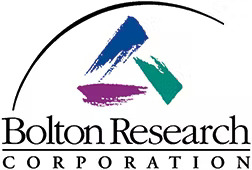The Option Value of Traditional Media: What Is It and How Can It Be Leveraged
This week, Dan Ramsden, CEO and founder of CoRise, a digital media merchant banking and strategic advisory firm, offers his thoughts about the undervalued advantages of traditional media, and how to compound their value with the new transactional social media platforms.
The more some things change, the more these become familiar. Technical advancement has throughout history changed rules of engagement, but the rules of commerce tend to be what they have always been. The logic of markups, markdowns, and inventory management is generally consistent for online and offline retail, even if systems are different. The goal of increased traffic is the same for merchants in this century as it was for merchants in the last, even if methods vary. Advertising, marketing, promotions, whether on paper, in the mail, on television, radio, billboards, or on mobile devices deliver similar messages and are driven by the same fundamental business needs, regardless of industry or era. And regardless of technology or automation, the most valuable business asset tends one way or another to boil down to customer relationships. In media, which uniquely brings together merchants or customers, this is about community and following.
All About Networks and Customer Engagement
When innovative platforms such as for instance, Groupon, blend new techology and direct sales to build networks of local sellers and buyers, this is not fundamentally different from what local media platforms have done for decades…or in the case of newspapers, centuries. When social networks like LinkedIn combine individual information and professional interests with company profiles and contacts, this is only a stone’s throw away from the classifieds. Newsfeeds intermingled with the occasional sponsored ad on Twitter is news media in its most fundamental form, only mobile and more immediate than Twitter’s more traditional counterparts. Facebook, which is attempting to do more or less all of the above, is in this sense a sort of media conglomerate, even if it is still tinkering and experimenting with various recipes of advertising, promotions, and direct commerce. What all these new platforms rely on and strive for – communities of engaged users – is something the traditional media have built and nurtured since forever.
Diverging Perceptions About Converging Possibilities
Despite such parallels and similiarities, there seems to be a disconnect in perception and certainly in financial valuation, between the new and the more traditional media. Up to this point, the contrast has been justified. On one hand there are new technologies demonstrating enormous user adoption and global growth, while on the other hand there are mature businesses. One one hand there is a high option value, as innovation finds its place on volatile terrain, while on the other hand is the tried and true and that which – according to perception – is what it is, or more appropriately perhaps, what it was. We now seem, however, to find ourselves at a point where certain changes in environment are discernible, and which have the potential to change the dynamic described. On one hand, sector volatility is subsiding – which is to say, the newer media leaders are establishing their presence and drawing up their domains, while consumers are beginning to settle into seemingly lasting habits. On the other hand, new technologies – especially in data and targeting – are enabling new efficiencies to be extracted from large existing user bases in media consumption.

New Options for Established Assets
In short, the option value now is not necessarily – or not only – in the new platform with its new users, but also in new ways to access existing networks and tap into existing product. The newest opportunity, in other words, and one that is likely to last for some time, is for traditional media to incorporate new systems into its massive engaged networks already in place, and for the new media establishment to integrate older platforms and tap into enormous existing potential. Stated differently still, the new optionality and value creation opportunity in media – whether old or new – lies in the integration of established user networks with new technologies. In this new landscape, there is as much untapped value in traditional media, who audiences are as massive and as engaged, as any of their newer counterparts.
For more information, visit the CoRise website at www.coriseco.com, and read the author’s blog at www.discourseandnotes.com.




